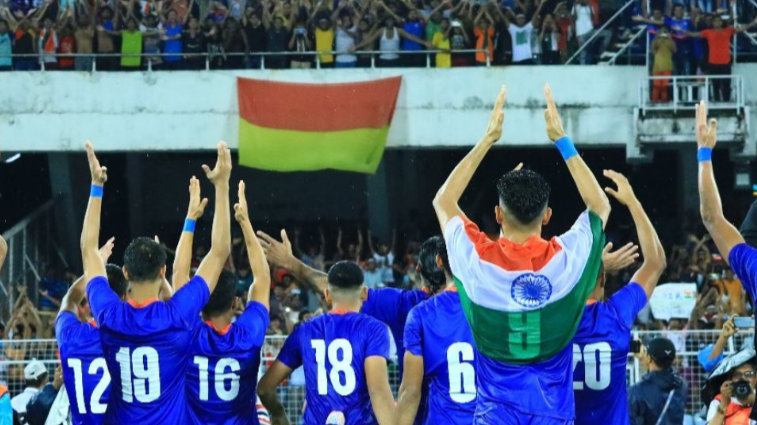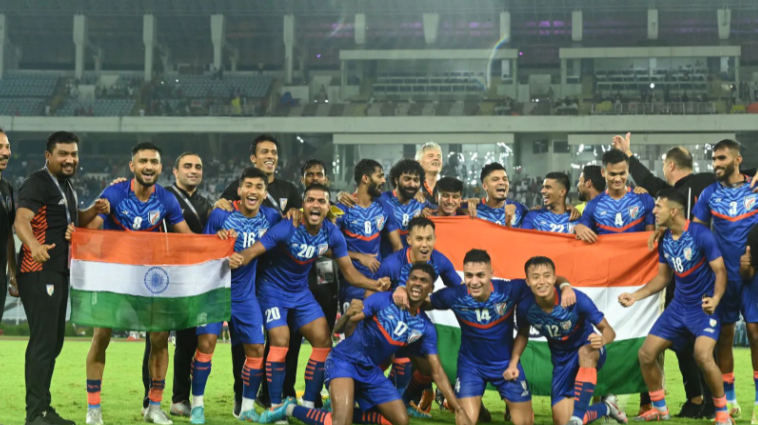
The 22nd FIFA World Cup may have ended in Qatar with Argentina hoisting the title, but Indian soccer fans still appear to be grieving India’s absence from the event. Playing in the World Cup has been an
optical illusion, especially for India despite the fact that it is the most- watched sporting event in the world and is known to 95% of sports enthusiasts.
India indeed had a chance to participate in FIFA in 1950, when they were invited to play the FIFA World Cup at the world’s biggest stadium “the Maracana” in Rio de Janeiro, Brazil. At the World Cup, India was slated to face Sweden, Italy, and Paraguay. India, however, choose not to participate because the All India Football Federation considered the Olympics to be more prestigious.
Brazil also offered to pay for their travel, but the AIFF declined, citing “disagreements over team selection and insufficient practice time,” as justification for not sending the team halfway around the world by ship. The reality is that the Indian team did not deserve to be there, having received the invitation by default. In the grief-stricken world of the post-second world war, nations with better credentials such as Argentina, Germany, Czechoslovakia, and Hungary among other European nations either boycotted the World cup or chose not to participate.
Since 1950, the Indian football team has not made it to the FIFA world cup. So far, Indian teams have been unsuccessful in their attempts to reach the World Cup under Sunil Chettri, captaincy. With such a passion for the game in India, the big question that always arises when the World Cup is held every four years is, “Why can’t India qualify for the football World Cup?” The Indian national team’s failure to qualify for the World Cup has several reasons and the biggest of them are:
The skill gap between players
Even those who are critical of the state of Indian football concur that the nation’s caliber of play is well behind that of the rest of the world. Our athletes are not skilled enough or physically fit enough to participate in the event at such a huge venue. The Blue Tigers have experienced their brightest years from the late 1940s to the late 1960s. During that time, they competed in four Olympics and won two gold medals at the Asian Games.
The performance of the Indian squad has steadily deteriorated since 1970. The team’s current FIFA ranking is 106th, while its highest ranking was 94 in the year 1996. India needs to move up 60 FIFA rankings to qualify for the 2026 Cup, and in order for its participation to be guaranteed, it must be ranked as the sixth Asian country. However, it appears unlikely to happen given India’s recent performance.
The Blue Tigers recently competed in two international friendlies in September, where they tied 1-1 with Singapore and lost 0-3 to Vietnam. The Blue Tigers were ranked 106th for the last time in March 2022. Furthermore, they were eliminated from the Asian World Cup qualification process in the second round, ending their chances of qualifying for the 2022 Qatar World Cup. Overall, the team finished third after Qatar and Oman in Group E of the Asian Qualifiers.
Little to no support from governing bodies

In recent decades, Indian football has undergone a transformation at the hands of different clubs and franchises that have witnessed the sport’s growing popularity in the nation. On the other hand, there are currently 37 state associations connected with the All India Football Federation, and several states have regional governing bodies to assist new talent on their way to the top. The extent of that assistance, however, has been declining yearly.
According to one response, the Annual Calendar for Training and Competition (ACTC) budget was Rs 23.08 crore in 2018–19 and rose to Rs 29.94 crore in 2019–20. The following several years, which include the pandemic years, have seen a sharp fall. The budget was Rs 10.31 crore in 2020–2021 and just Rs 5.25 crore in 2021–2022 respectively. A budget of Rs 15 crore has been allocated for 2022–2023 with additional Rs 10 crore for the FIFA U-17 Women’s World Cup.
Lack of Infrastructure, Vision, and Promotion of tournaments
Three of the main obstacles impeding the development of football in India are a lack of infrastructure, promotion of the sport, and long-term planning. In India, there are no suitable football venues, and even some of the biggest and most well-known clubs lack the necessary training and medical facilities. In comparison to the size of the Indian geographical region and the size of the fan base, there are fewer football stadiums in India that meet international standards.
The government has to build new football centers and offer training facilities to aspiring talents in states like West Bengal, Goa, Maharashtra, and Kerela where this sport is extremely popular. It is past time to promote Indian football at the grassroots level given that more than 30 million Indians watch the European Football League.
